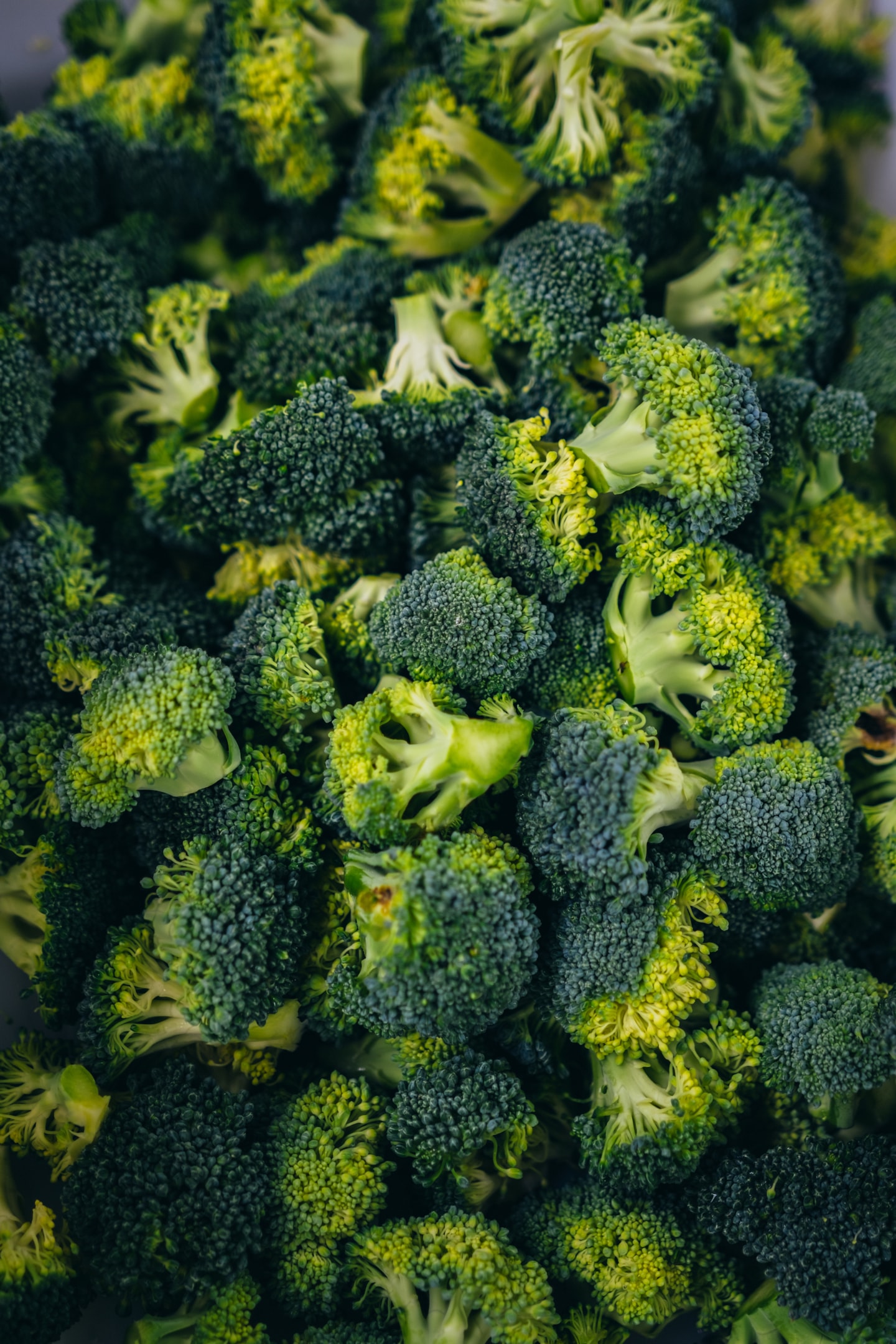Fiber: A Comprehensive Guide by Athletes Kitchen
What Is Fibre: Your Essential Guide to a Healthy Diet
Fiber, also known as dietary fibre, consists of plant-based carbohydrates that the body can’t digest. Unlike other nutrients that are broken down and absorbed, fiber passes through the digestive system intact. The two main types of fiber – soluble and insoluble – offer numerous health benefits, including aiding digestion and lowering cholesterol levels. This article will explore what is fibre, its types, and its role in maintaining a healthy diet.
Key Takeaways
- Dietary fiber is essential for digestive health, categorized into soluble and insoluble types, each offering unique benefits.
- A high-fiber diet promotes heart health, weight management, and blood sugar control while reducing the risk of digestive disorders.
- Adults should aim for 25-30 grams of fiber daily, primarily from a variety of whole foods, while gradually increasing intake and maintaining hydration.
Understanding Dietary Fiber
Dietary fiber, also known as roughage, consists of parts of plant foods that cannot be digested or absorbed. Unlike carbohydrates, proteins, and fats, which your body breaks down and absorbs, fiber passes relatively intact through your digestive system. This unique characteristic of fiber is what makes it so beneficial for our health.
There are two main types of dietary fiber: soluble and insoluble fiber. Soluble fiber dissolves in water and creates a gel-like substance. This process can help lower blood cholesterol and glucose levels. On the other hand, insoluble fiber does not dissolve in water; it helps add bulk to the stool and promotes the movement of material through the digestive system. Both types of soluble and insoluble fiber, including soluble fibers, play essential roles in maintaining digestive health.
Fiber is naturally present in many foods, including fruits, vegetables, and cereals (though we don’t recommend cereals due to their high levels of processing and artificial flavors). Incorporating a variety of fiber-rich foods into your diet ensures you get enough fiber to support overall health. Understanding the basics of dietary fiber is the first step toward reaping its numerous health benefits.
Types of Dietary Fiber
When it comes to dietary fiber, not all fibers are created equal. There are primarily two types of fiber that you need to know about: soluble and insoluble. Each type has unique properties and health benefits.
Although both types are important for optimal health, there’s no need to stress about differentiating between them daily. The key is to focus on overall fiber intake from a variety of high-fiber foods.
Soluble Fiber
Soluble fiber is known for its ability to dissolve in water, forming a viscous, gel-like substance. This characteristic is what makes soluble fiber so effective at lowering glucose levels and blood cholesterol. Foods high in soluble fiber include oats, fruits, and legumes. When you consume these foods, the soluble fiber they contain helps slow down the digestion and absorption of carbohydrates, which can prevent blood sugar spikes.
One of the standout benefits of soluble fiber is its role in heart health. By helping to lower LDL cholesterol – often referred to as “bad” cholesterol – soluble fiber can significantly reduce the risk of cardiovascular disease. This type of fiber also contributes to overall digestive health by promoting the growth of beneficial gut bacteria, which produce short-chain fatty acids (SCFAs) that play a role in gut health and immunity.
Despite its numerous benefits, it’s important to remember that soluble fiber does provide calories, so it should be consumed as part of a balanced diet. Incorporating a variety of soluble fiber-rich foods into your meals can help you enjoy these health benefits without overdoing your calorie intake.
Insoluble Fiber
Insoluble fiber, unlike its soluble counterpart, does not dissolve in water. Instead, it passes through the digestive tract relatively intact, adding bulk to the stool and facilitating its movement through the digestive system. This type of fiber is particularly effective in preventing constipation and promoting regular bowel movements.
Whole grains and vegetables are primary sources of insoluble fiber. Foods like wheat bran, brown rice, and the skins of fruits and vegetables are rich in this type of fiber. Including these foods in your diet can help maintain a healthy digestive system and prevent digestive disorders such as irritable bowel syndrome and diverticular disease.
Insoluble fiber also plays a role in weight management by adding bulk to your diet, which can make you feel fuller for longer periods. This can help reduce overall calorie intake and support weight loss efforts. Including a mix of both soluble and insoluble fibers in your diet ensures comprehensive digestive health and overall well-being.
Health Benefits of Dietary Fiber
The health benefits of dietary fiber are vast and well-documented. One of the primary benefits is its positive impact on the digestive system. A high-fiber diet helps maintain regular bowel movements, preventing constipation and promoting a healthy gut. It also aids in the prevention of digestive disorders such as irritable bowel syndrome and colorectal cancer.
Dietary fiber is also crucial for heart health. Soluble fiber, in particular, helps reduce total and LDL cholesterol levels, which can lower the risk of heart disease and cardiovascular events. Studies have shown that higher fiber consumption is linked to a reduced risk of mortality from cardiovascular disease. This makes dietary fiber an essential component of a heart-healthy diet.
In addition to its digestive and heart health benefits, dietary fiber can aid in weight management and blood sugar control. High-fiber foods are generally more satisfying, which can help control appetite and reduce overall calorie intake. Fiber also helps regulate blood sugar levels, making it beneficial for individuals with diabetes. By slowing down the absorption of sugar, fiber can prevent blood sugar spikes and improve insulin sensitivity. These benefits extend beyond the gut, influencing overall health and well-being.
Recommended Daily Fiber Intake
Knowing your fiber needs is key to reaping its health benefits. Globally, adults are advised to consume between 25 to 30 grams of dietary fiber each day, with a focus on increasing dietary fibre intake. Specific recommendations include 25-35 grams per day, with pregnant and breastfeeding women aiming for at least 28 grams. For individuals over the age of 50, the recommended intake is 21 grams for women and 30 grams for men.
Despite these recommendations, the average dietary fiber intake among adults in North America is approximately 17 grams per day. Alarmingly, only about 5% of Canadians meet the recommended daily fiber intake. This significant gap highlights the need for increased awareness and effort in incorporating more fiber into daily diets.
Meeting the daily fiber recommendation can be challenging without careful dietary planning. It requires consuming a significant volume of high-fiber foods, which can be daunting but is achievable with the right approach. Prioritizing whole foods like fruits, vegetables, whole grains, and legumes helps boost your fiber intake to recommended levels.
High-Fiber Foods
Incorporating high-fiber foods into your diet is essential for meeting your daily fiber needs. Dietary fiber is found in the indigestible components of fruits and vegetables. Emphasizing whole foods, such as fruits, vegetables, and whole grains, is a practical way to achieve this.
Some of the best sources of dietary fiber include whole grains, whole fruits and vegetables, legumes, and nuts. Beans, peas, and lentils are excellent high-fiber options to include in meals, providing both soluble and insoluble fibers. Fruits and vegetables with skins are particularly rich in fiber, so it’s beneficial to consume them whole.
Incorporating a variety of high-fiber foods into your diet helps meet nutritional needs and improve overall health. Snacking on raw vegetables, adding legumes to soups and salads, and choosing whole grains over processed foods are simple ways to boost your fiber intake.
Increasing Fiber Intake Safely
When increasing your fiber intake, it’s essential to do so gradually to avoid digestive discomfort. Introducing high-fiber foods too quickly can lead to gas, bloating, and other gastrointestinal issues. Instead, integrate fiber into your diet gradually over several weeks to allow your digestive system to adjust.
Adequate hydration is crucial when increasing fiber intake. Fiber absorbs water, which helps soften and add bulk to the stool, making it easier to pass. Drinking plenty of water throughout the day will support this process and prevent constipation.
While natural food sources of fiber are preferred, fiber supplements can be useful if dietary changes aren’t sufficient or if certain medical conditions require additional fiber. However, whole foods offer additional nutrients and benefits, making them the better choice whenever possible. Snacking on raw vegetables, fruits, and whole-grain foods can help you safely and effectively boost your fiber intake.
Fiber Supplements: When and How to Use Them
Fiber supplements, such as Metamucil, Citrucel, and FiberCon, can be considered when dietary changes alone aren’t enough to meet your fiber needs. They are particularly useful for individuals with medical conditions that require additional fiber or those who struggle to consume enough fiber-rich foods.
While fiber supplements can help increase fiber intake, whole foods are generally preferred. Whole foods provide a variety of fibers, along with essential vitamins and minerals, which fiber supplements lack. Therefore, it’s best to rely on supplements only when necessary and prioritize a diet rich in natural fiber sources.
Before starting any fiber supplement, it’s crucial to consult a healthcare provider. This is to ensure there are no potential interactions with medications or other health considerations that need to be addressed. Proper guidance will help you effectively and safely incorporate fiber supplements into your diet.
Short-Chain Fatty Acids and Gut Health
Short-chain fatty acids (SCFAs), such as acetate and butyrate, are produced during the fermentation of dietary fiber by gut bacteria. These SCFAs play a crucial role in maintaining gut health and protecting against harmful bacteria. Consuming more plant-based fibers leads to a higher production of SCFAs compared to an animal-based diet.
SCFAs enhance the absorption of essential minerals, including calcium, in the body. This is particularly beneficial for bone health and overall mineral balance. Additionally, a high-fiber diet can decrease the likelihood of developing conditions like hemorrhoids and diverticular disease, further promoting a healthy digestive system.
Understanding the role of SCFAs underscores the importance of a high-fiber diet not just for digestive health but for overall well-being. Supporting gut health, SCFAs contribute to a robust immune system and better nutrient absorption.
Common Myths About Dietary Fiber
There are several myths surrounding dietary fiber that often lead to misunderstandings about its role in nutrition. One common myth is that fiber interferes with mineral absorption. In reality, dietary fiber can actually improve mineral absorption rather than detract from it.
Another myth is that all fibers have the same gastrointestinal tolerance. In truth, different types of fiber can have varying levels of tolerance, depending on their structure and an individual’s gut microbiota. This variability means that some people may experience discomfort with certain types of fiber, but not others.
Debunking these myths is crucial for providing accurate, evidence-based information about dietary fiber. Understanding the true benefits and characteristics of dietary fiber helps individuals make informed choices that support health and well-being.
Summary
Dietary fiber is an essential component of a healthy diet, offering numerous benefits for digestive health, heart health, weight management, and blood sugar control. Both soluble and insoluble fibers play vital roles and should be included in your daily diet through a variety of high-fiber foods.
By understanding the recommended daily intake, the best sources of fiber, and how to safely increase your fiber consumption, you can take proactive steps toward improving your health. Embrace the power of dietary fiber and make it a cornerstone of your nutritional journey.
Frequently Asked Questions
What are the main types of dietary fiber?
The main types of dietary fiber are soluble and insoluble fiber. Soluble fiber aids in lowering glucose and cholesterol levels, whereas insoluble fiber promotes regular bowel movements.
How much dietary fiber should I consume daily?
It is advisable for adults to consume between 25 to 30 grams of dietary fiber daily, with a minimum target of 25 grams serving as a general guideline. This intake can help support overall health and digestive function.
What are some good sources of dietary fiber?
A strong choice for dietary fiber includes whole grains, fruits, vegetables, legumes, nuts, and seeds, with beans, peas, and lentils being especially fiber-dense. Incorporating these foods into your diet can enhance your overall fiber intake effectively.
Can I take fiber supplements instead of eating high-fiber foods?
While fiber supplements can be beneficial, it is advisable to prioritize high-fiber foods due to their additional nutritional benefits. Consulting a healthcare provider before initiating any supplements is also recommended.
How can I safely increase my fiber intake?
To safely increase your fiber intake, do so gradually over several weeks while ensuring adequate hydration. Incorporate a variety of high-fiber foods such as fruits, vegetables, whole grains, and legumes into your diet.


